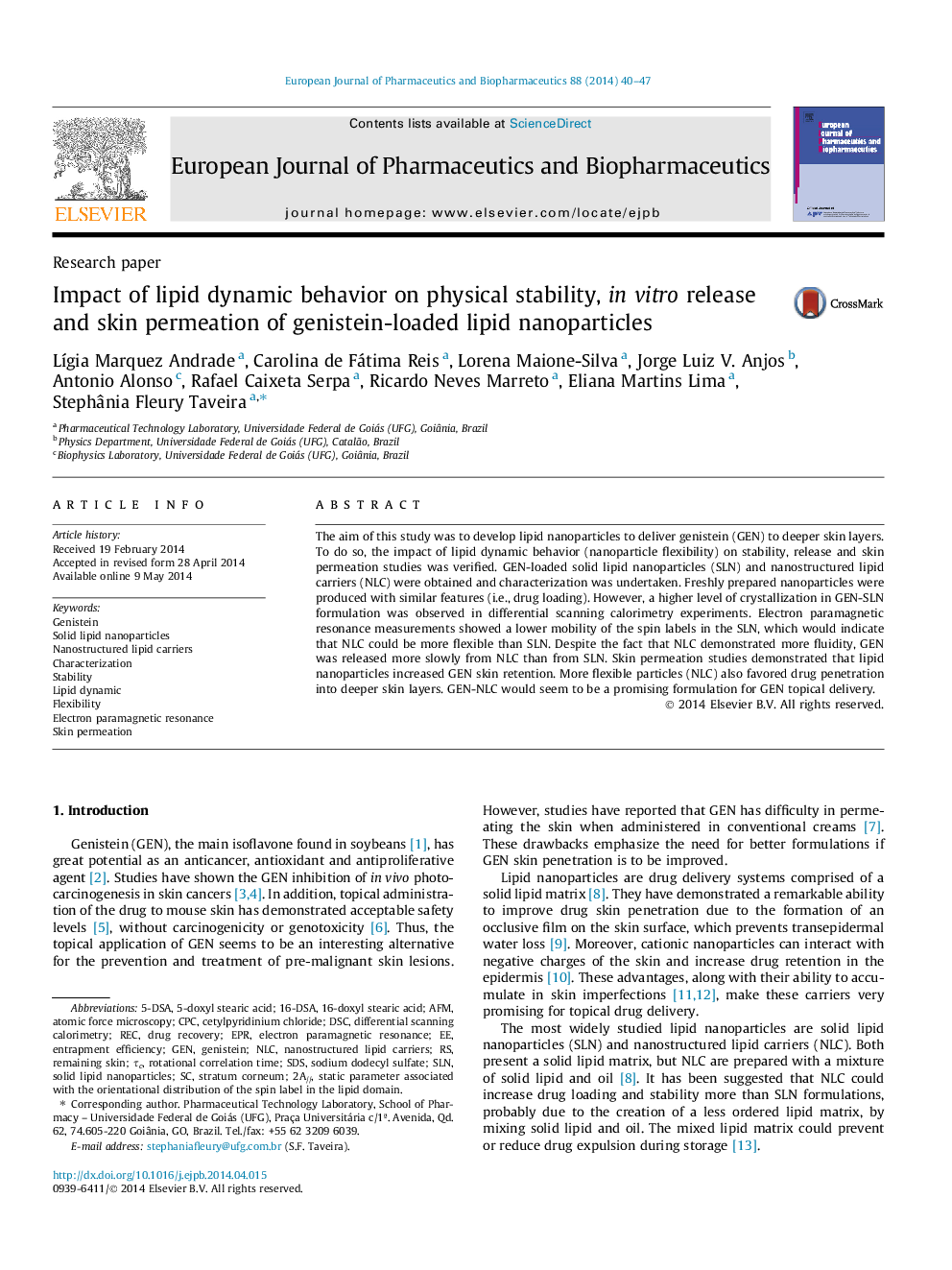| Article ID | Journal | Published Year | Pages | File Type |
|---|---|---|---|---|
| 2083582 | European Journal of Pharmaceutics and Biopharmaceutics | 2014 | 8 Pages |
•Lipid nanoparticles controlled genistein release and increased it skin penetration.•Lipid dynamic behavior influences the nanoparticles stability.•Nanostructured lipid carriers were more flexible than solid lipid nanoparticles.•More flexible lipid nanoparticles increased genistein skin penetration.•Electron paramagnetic resonance indicates that genistein is in the nanoparticle surface.
The aim of this study was to develop lipid nanoparticles to deliver genistein (GEN) to deeper skin layers. To do so, the impact of lipid dynamic behavior (nanoparticle flexibility) on stability, release and skin permeation studies was verified. GEN-loaded solid lipid nanoparticles (SLN) and nanostructured lipid carriers (NLC) were obtained and characterization was undertaken. Freshly prepared nanoparticles were produced with similar features (i.e., drug loading). However, a higher level of crystallization in GEN-SLN formulation was observed in differential scanning calorimetry experiments. Electron paramagnetic resonance measurements showed a lower mobility of the spin labels in the SLN, which would indicate that NLC could be more flexible than SLN. Despite the fact that NLC demonstrated more fluidity, GEN was released more slowly from NLC than from SLN. Skin permeation studies demonstrated that lipid nanoparticles increased GEN skin retention. More flexible particles (NLC) also favored drug penetration into deeper skin layers. GEN-NLC would seem to be a promising formulation for GEN topical delivery.
Graphical abstractFigure optionsDownload full-size imageDownload high-quality image (229 K)Download as PowerPoint slide
